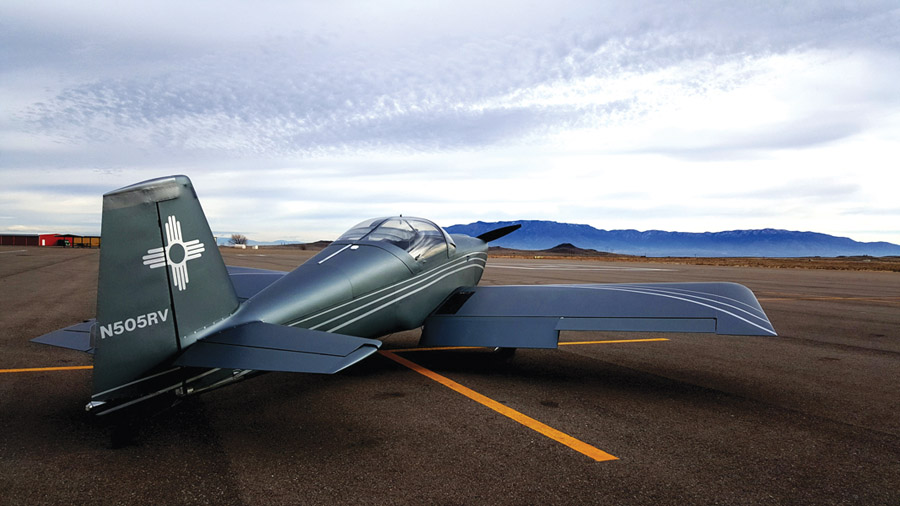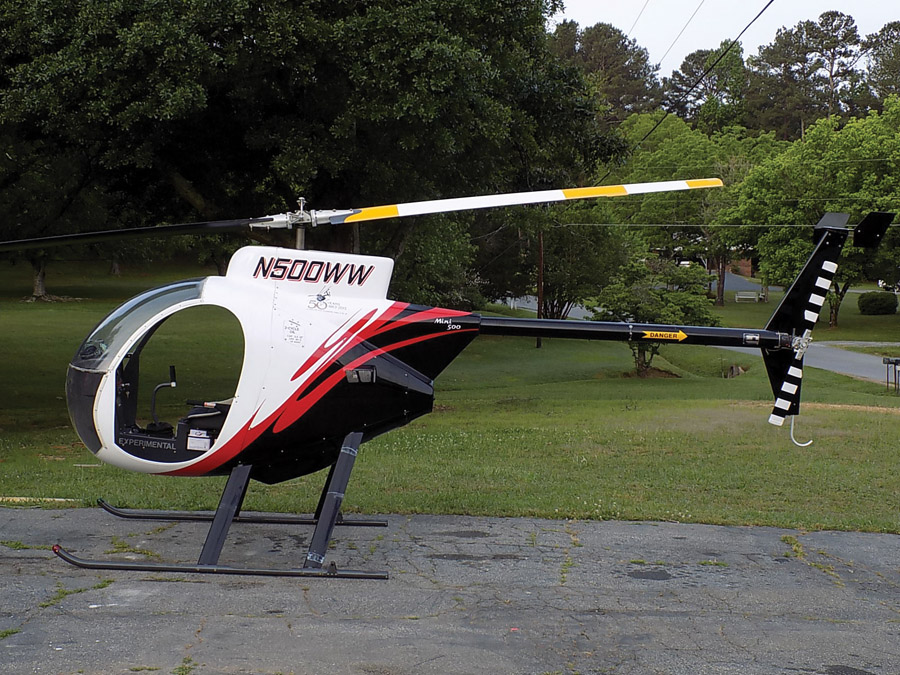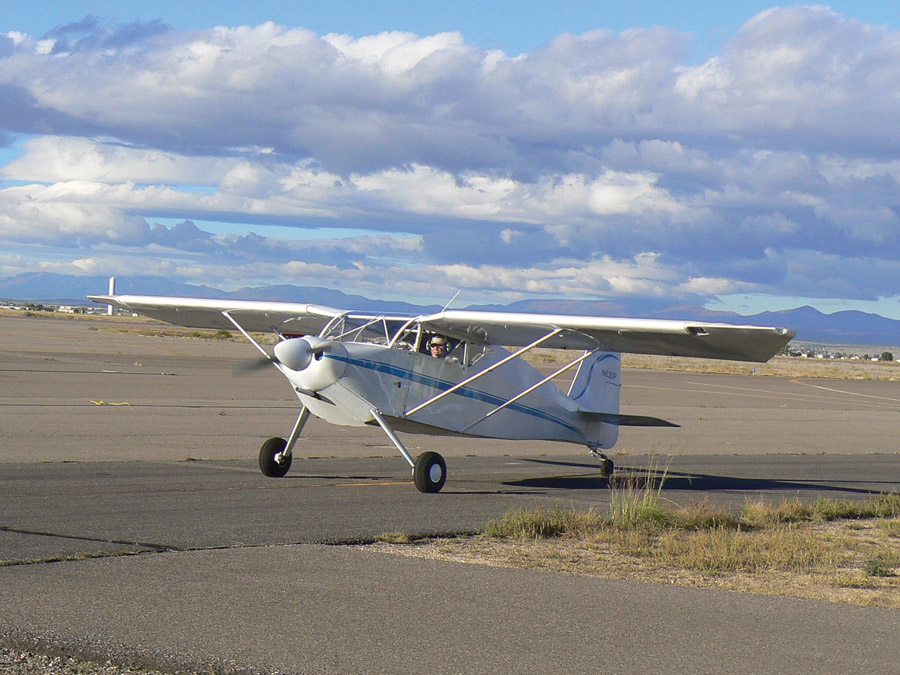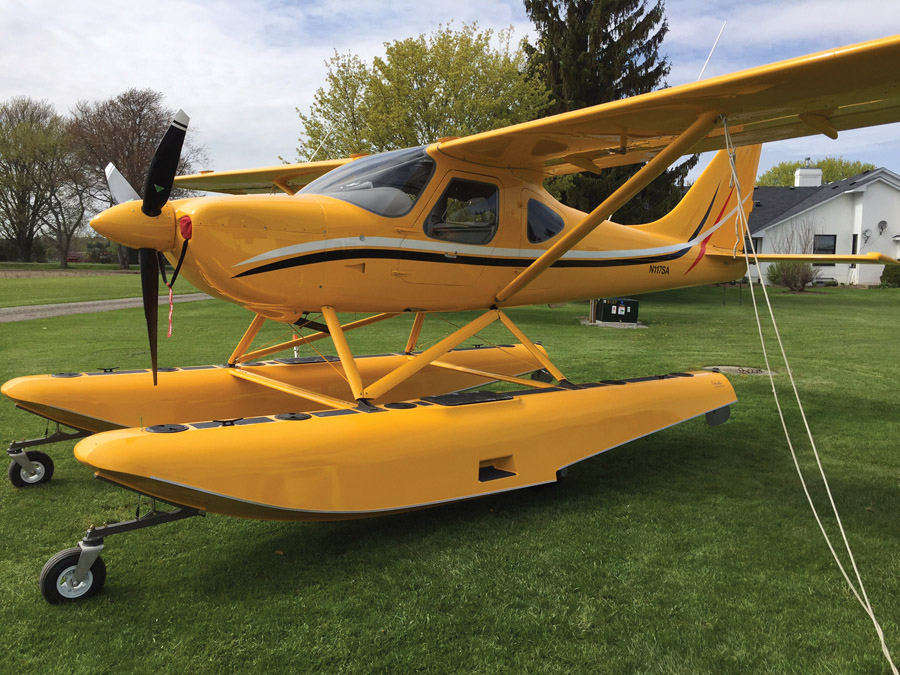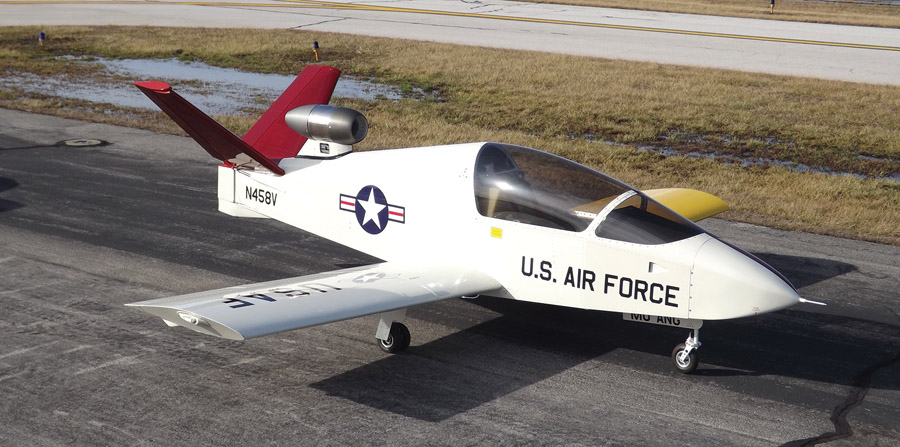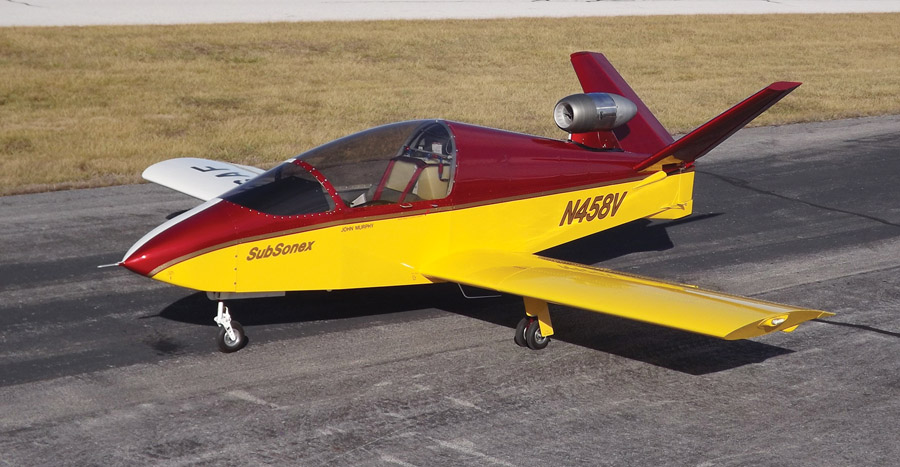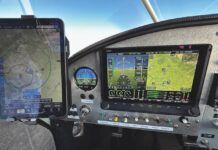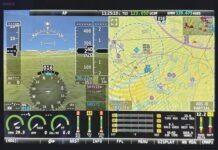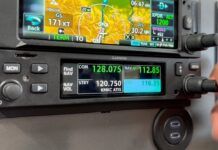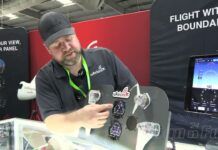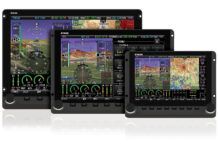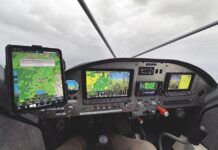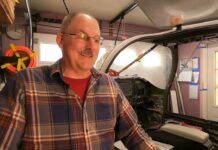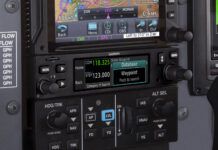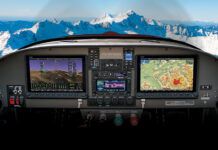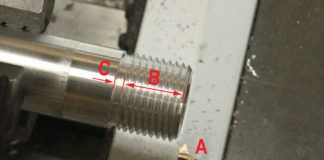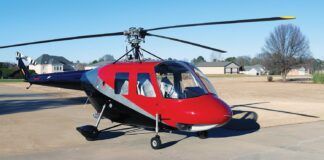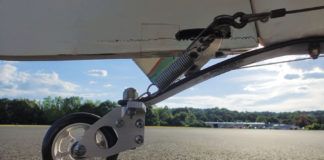Ed Lee’s Sonex
I completed Sonex #1212 and made the first flight August 28, 2016. It now has 112 hours on it with its Corvair 3100cc engine, and it is running perfectly. Thanks to William Wynne and Bill Clapp for their wisdom on Corvair aircraft engine conversions.
The plane is licensed at 1320 pounds and was fully test flown at that weight. It has 11 gallons of auxiliary fuel in the wings and flies at 145 mph on less than 6 gallons per hour at 6500 feet at gross weight. It’s the most fun I have ever had in over 4000 hours of flying.
Lancaster, South Carolina
[email protected]
David Otero’s RV-7
My RV-7 project started on January 5th, 2014 with the empennage kit. From the moment I opened the first crate, I knew this would be a plane that I would complete and fly. One week shy of two years later, it was time for the first flight.
On Wednesday, December 30, 2015, Segundo Viento (Spanish for Second Wind) took off from Albuquerque’s Double Eagle II’s (KAEG) Runway 17. The plan I had coordinated with the tower was to orbit the airport above pattern altitude (6800 feet) at 8500 feet. At that altitude I contacted ABQ Approach; they gave me a squawk code and cautioned me to keep below 8500 feet. This happened just as I saw my altimeter blasting right through 8500 feet. The flight lasted about 25 minutes, but the RV grin lasted a couple of days. After eight months of flying, I decided to wrap my plane in vinyl rather than paint. I’m very happy with the results at one-tenth the cost.
Primary thanks go to my wonderful and patient wife Margie. She helped me pick which model of RV to build, picked the interior colors and registration number, and even did a bit of drilling, Clecoing, and riveting, too. I’d also like to thank Rich Tichy and the other members of Illinois EAA Chapter 461, and the Albuquerque RV group. I was very fortunate to have your help.
Albuquerque, New Mexico
[email protected]
Bryan Cobb’s Mini-500 Bravo Plus
It took me three years to assemble this helicopter while working a full-time job. It is equipped with all factory updates and the PEP tuned exhaust (78 hp). The Mini-500 started life as a new-in-the-crate kit, purchased on eBay in February 2013. Another old barn-find Mini-500 was also purchased on eBay from which to cannibalize all of the mast support and other items. A second-hand Rotax 582 blue head was purchased off of a flying airplane (Rans S-14). I have been a Mini-500 enthusiast since the early 90s and flew one for 100 hours in the late 90s.
Changes made during this build include four matched feathering bearings in each blade grip (cones), a two-piece tailrotor driveshaft with two Morflex elastomeric couplings, a Weldon main gearbox oil pump with large oil cooler, an Arrow brand ring and pinion in the main gearbox, and tapered roller bearings on the pinion (indirect mounting method) to carry thrust load. It also has an aluminum engine coolant radiator, a graphite impregnated Garolite slider for T/R pitch control, aerospace-grade Aurora SS teter bearings, and a centrifugal clutch balanced to 12,000 rpm.
The airworthiness certificate was received on May 11, 2016. The helicopter weighs 524 pounds and has a maximum takeoff weight of 840 pounds. It holds 14.5 gallons of non-ethanol 90-octane fuel and burns about 6 gallons per hour with the current jets (158 main, 2.78 needle).
Cartersville, Georgia
[email protected]
Dan Palmer’s Wittman Buttercup
This is my Steve Wittman-designed Buttercup, built and flown at Moriarty, New Mexico. Earl Luce plans were used for the airframe. It is powered by a Corvair 2700 engine with William Wynne components, Dan Weseman 5th bearing, and a Warp Drive prop. I used Stewart Systems, fabric through top coat.
Moriarty, New Mexico
[email protected]
Scott Alperin’s Sportsman
I completed construction of my Glasair Sportsman on November 1, 2016 in the Two Weeks to Taxi program at Glasair Aviation and received the airworthiness certificate the next day. The plane remained at Glasair and had the required 40 hours of test flying completed and was then sent to the paint shop. The finishing touches and final preparation were done by the Glasair technicians, and the plane was once again test flown to be sure it was ready for me to take delivery.
My good friend Robert Metelko and I departed Arlington, Washington, on a late Friday afternoon en route to Cleveland, Ohio. We made stops in Missoula, Montana; Billings, Montana; and Fort Dodge, Iowa. Performance was excellent and all of the systems operated as expected during the 1900 n.m. journey. We flew as high as 14,000 feet to remain free of icing, and once we reached the flatlands stayed at about 5000 feet. I recently placed the plane on Clamar amphibious floats to complete the project.
Cleveland, Ohio
[email protected]
John R. Murphy’s SubSonex
My JSX-2 SubSonex was completed in November 2015 after 22 months of building, and it is the third customer-built SubSonex to fly. Many thanks to the Sonex crew: John, Mark, Kerry, Jason, Levi, and Jake for all the support. I am sure Jeremy Monnett also would have been very proud to see this kit completed and flown.
I couldn’t decide on the paint scheme, so putting a different scheme on each side seemed to be a good solution. A BRS emergency parachute is installed, along with an MGL Avionics 8.5-inch EFIS Explorer, V-6 com radio and Sandia STX-165c transponder. A belly-mounted video camera allows me to watch the landing gear go up and down.
My flight training was accomplished at Desert Aerospace by Bob Carlton, Billy Hill, and designated pilot examiner Bob O’Haver.
Special thanks to Tom Ward and many other homebuilders at Spirit of St. Louis Airport for their help.
Chesterfield, Missouri
[email protected]
BUILDERS SHARE THEIR SUCCESSES
 Submissions to “Completions” should include a description (a few paragraphs only—250 words maximum) of the project and the finished aircraft. Also include a good color photograph of the aircraft. Please include a daytime phone number where we can contact you if necessary. Also indicate whether we may publish your address in case other builders would like to contact you. Send submissions to [email protected] with a subject line of “Completions.” Photos must be high-resolution—300 dpi at a 3 x 5 print size is the minimum requirement.
Submissions to “Completions” should include a description (a few paragraphs only—250 words maximum) of the project and the finished aircraft. Also include a good color photograph of the aircraft. Please include a daytime phone number where we can contact you if necessary. Also indicate whether we may publish your address in case other builders would like to contact you. Send submissions to [email protected] with a subject line of “Completions.” Photos must be high-resolution—300 dpi at a 3 x 5 print size is the minimum requirement.


